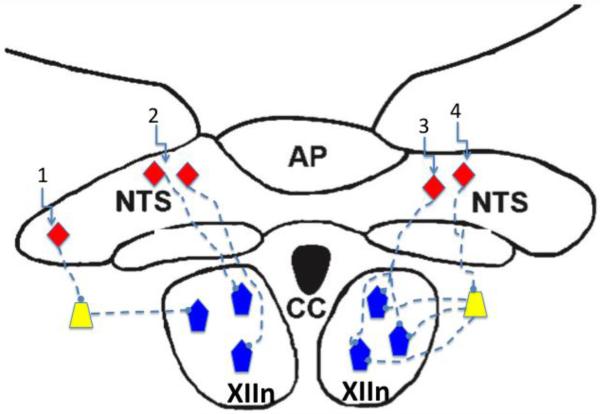Figure 2.
Schematic diagram showing interneurons of the nucleus of the solitary tract (NTS, orange diamonds), interneurons in the intermediate reticular formation (yellow trapezoids) and hypoglossal motoneurons (blue pentagons). Scenario 1 suggests that NTS sensory interneurons project to interneurons in the intermediate reticular formation, which in turn project to hypoglossal motoneurons; Scenario 2 depicts directs connections from NTS interneurons to hypoglossal motoneurons, bypassing the interneuron pool; Scenario 3 is similar to scenario 2, inasmuch as synaptic connections from the NTS bypass the interneuron pool, but in this case a single NTS interneuron branches to provide divergent input to multiple motoneurons; Scenario 4 is similar to scenario 1, but in this case the interneurons receiving input from the NTS diverge, activating multiple motoneurons. See text for detailed description. XIIn, hypoglossal motor nucleus; AP, area postrema; CC, central canal.

